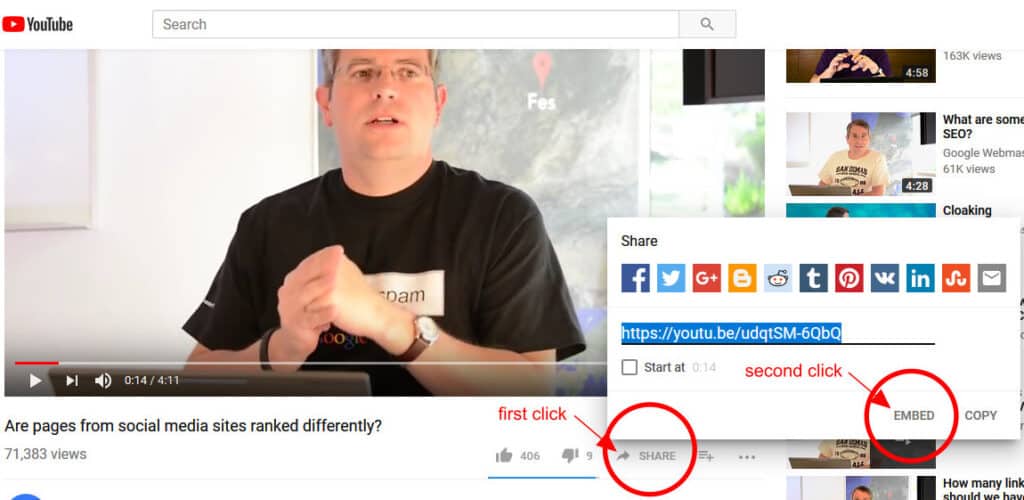
When you use Facebook or any other social media outlet as your church’s primary online content holder — instead of your church’s website — you shortchange your online content and create a false sense of online success for the promotion of the Gospel. This article will show the shortcomings of content placed primarily on Facebook versus the strengths and longterm benefits of keeping your content on your website, along with providing solutions for the best outcomes.
Mark Sieler, owner of Faith Builders
One cautionary tale begins like this: your church builds a website but after a small amount of time you find that posting pictures, events, videos, articles and other content to your Facebook page is easier and gets more “likes.”
Another tale might begin with a well-meaning pastor who’s looking for a web designer but who uses social in the interim and thinks that he can easily bypass the website.
The problem with both scenarios is, the content you’re giving to Facebook isn’t boosting your brand or your searchable content or your church’s credibility in the eyes of search engines.
Another problem is not serving the promotion of the Gospel properly.
Facebook’s algorithm decides how to promote your content
Facebook does NOT have your church’s best interests in mind when it comes to promoting your content. Despite the allure and apparent ease of dropping your web content in front of a sea of traffic, Facebook’s goal is to keep its visitors engaged and cemented to their site. That’s nowhere near an ideal place to park a post about the Gospel or any other content of importance. The unfortunate truth is that your web content is at the mercy of a Facebook algorithm that will “decide” — for maybe some traffic or completely none at all — whether your content will be viewed by others for all of maybe one news cycle.
A sea of distraction

Promoting the Gospel or any other quality church content requires a clean, distraction-free medium. But Facebook’s goal is to keep its visitors engaged with its very own content, so they can be counted on using everything from cat videos to informal surveys to politically-charged ads to games — anything necessary to prevent people from leaving.
Unlike your church’s sanctuary, you can’t control the distractions. A typical Facebook page will contain all sorts of noise — testimonials from every sort, pictures from strangers, questionable comments and so forth. Some might argue that this is the price you pay for popularity, but I would argue that the Gospel isn’t democratic or reliant upon any sort of worldly popularity for viral lift. The Gospel doesn’t need distraction but it sure does need dedicated attention spans.
Likes don't matter
Search engines do watch social signals such as likes, but the fact of the matter is those very same likes do very, very little (see video, below) to boost your website’s search engine rankings. It’s a common misconception that the more likes you get, the higher your website will rise in search engine results. But there have been some large, industrial-strength discussions on this very topic and considering the sources it’s relatively easy to arrive at this very important conclusion: there is no causative relationship between likes and search engine rankings.
For another authoritative analysis straight from the source, take a quick look at this video from Matt Cutts, former Search Engine Evangelist for Google:
To further clarify the commoditization of “likes,” one need only visit a cheap labor site like fiverr.com to verify that, yes, 20 Facebook likes can be purchased for $5. Yet this very same hour. And search engines are very aware of this fact and therefore won’t be easily gamed by someone’s purchase of instant popularity.
Social comfort zone is hard to crack
No one has their head buried in the sand here. There is enormous traffic on social. It’s almost a utopian elixir for marketing types who see it as a pool where you can demographically target prospects down to the millimeter with your marketing message, but its results can be sobering. The fact that people on a social network rarely leave that network reinforces the idea that this is one comfort zone that’s incredibly difficult to crack.
Which is why Facebook can still serve a purpose, just not as your primary content holder for your church’s valuable online content.
Even as an experienced web developer, I’d much rather study, say, 6 months' worth of handwritten soil sediment reports, than try to deep-link to a specific piece of Facebook web content.
Mark Sieler, web developer
Linking to Facebook content is a major challenge
For anyone who’s ever wanted to share a specific link to an article or image or video or other piece of social content on Facebook, there’s the painful discovery that obtaining even a simple link to share with someone else is a herculean task. Even as an experienced web developer, I’d much rather study, say, 6 months’ worth of handwritten soil sediment reports, than try to deep-link to a specific piece of Facebook web content. There’s no simple, clear-cut method that stands out, either.
This also surfaces yet another social media problem: articles and other content in Facebook don’t often show up in web searches (there are numerous reasons for this), which really circles back to where we began. To get the full benefit of promoting your church’s ministry, your online content belongs on your website, primarily, where it can be shown in search engine results.
Solution #1: Restart your blog or website
I hope the above reasons are strong enough for you to restart your church’s web strategy by placing your online content on a website. Whether you already have a website, or are looking for someone (call us!) to help, here are some ways to benefit from existing technologies. I hope you’ll call or email if you have any questions.

As far as quickly updating your website, nothing beats the speed and convenience of using a WordPress blog. Numerous themes can be used to give your blog a unique visual flavor, and updating your website content is often just as easy as logging into your admin panel and changing the content and pressing update. Of course, I simplify this but it sure compares mightily in convenience to managing a regular website where something as simple as uploading an image requires college instruction.
Web strategy for your Independent Baptist Church
As mentioned, the goal here is to place important content primarily on your website and then link back to it from social media. Essentially, once you’ve created the page containing your content all you do is copy and paste the link for that page into your Facebook account and you’ve solved two big problems at once — storing your important content on your website AND using Facebook’s social environment to amplify your website content.

Video content is FREE with a Gmail account
YouTube plays a huge role in easing the burden of delivering and storing your space-hungry video content. Here’s why.

Uploading your church videos to YouTube is significantly more beneficial than placing them on Facebook, and it’s as easy as signing your church up for a Gmail account.
Once you’ve created and activated your church’s Gmail account (which can also be used with your Google Business listing account, and vice versa, but that’s another article), you just need to visit YouTube and you’ll see the upload arrow (circled above) where you can publish your videos. (For a detailed explanation of how to upload church videos to YouTube, see my detailed post here.)
YouTube video benefit #1: Uploading a video gives you a unique link you can share everywhere, especially on Facebook
When you first upload your video, you’ll see the link beside your video along the left. After you’ve uploaded a video — maybe you’re playing it back at a later time and you just want to share it again — you can find this link anytime just by simply clicking on the share arrow (see below), and copying it from there. Now this is a link you can share on Facebook, etc.!
YouTube video benefit #2: Can be linked to your website
When you upload your videos, part of the upload process involves adding a description. Inside this description, you can paste the link to your website. This helps send traffic to your website, especially if you’ve described other content as relevant.
YouTube video benefit #3: Can be embedded on your website
Whether it’s your video or someone else’s you can embed it on your website.


Solution #2: Growing and improving your website content is a win-win
Text, photos, audios and videos comprise a huge amount of church website content. With a focus on owning your content, your website will garner more traffic from being seen more frequently in search results. Search engines like Google and Bing will see new content on your website and will revisit and re-index more frequently to show your new content in search results.
Part of making sure your content lands on your website is making sure you’ve got the right technologies and staff in place. Call us for advice on how to make your church’s web content strategy serve your ministry’s goals.
